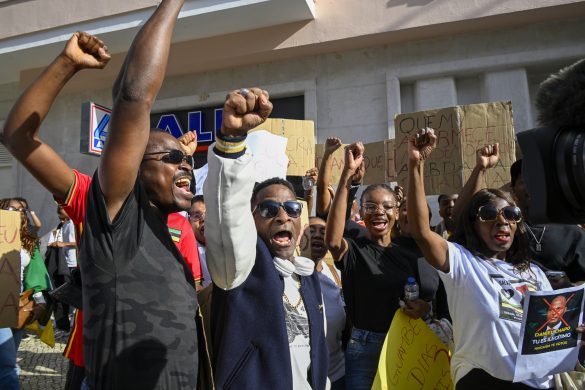Selv ikke det hidtil største beløb i humanitær hjælp fra donorerne kunne i fjor holde trit med kaskaden af natur- og menneskeskabte katastrofer og konflikter – og i år er alarmen gået i endnu flere lande kloden rundt, senest i Irak.
DAKAR, 14 July 2014 (IRIN): Humanitarian funding reached a record 22 billion US dollar (118 milliarder DKR) in 2013, yet almost a third of needs remained unmet, according to data recently released by the UK-based think tank Global Humanitarian Assistance Programme’s Development Initiatives.
“2013 was quite an extraordinary year and very different and very much in contrast to previous years,” said Daniel Coppard, director of research and analysis at Development Initiatives.
In response to the unprecedented levels of humanitarian need – particularly in light of three major crises in Syria, the Central African Republic (CAR) and the Philippines – both governments and private donors stepped up their response efforts in 2013 with unprecedented levels of funding.
“One certainly hopes that this response by the international community last year is not a one off and that it continues and is sustained in the coming years,” Coppard told IRIN.
Government donors, who accounted for around three-quarters of total aid in 2013, gave an estimated 16.4 billion dollar, up by one quarter in 2012. Private donors, including individuals, trusts, foundations and corporations, increased their contributions by 35 percent, to around 5.6 billion.
Good news – or?
While this increase is good news, Daniel Coppard said it still is not good enough.
“There is no room for complacency (tilfredshed) because still over a third of [humanitarian] needs are not being met,” he said, adding:
“And with Syria, in particular, it is quite clear that demands are set to rise both this year, 2014, and beyond.”
Syria’s 2014 humanitarian appeal is 26 percent funded, CAR’s is 37 percent funded while the Philippines appeals are 53 percent funded, according to OCHA’s (FNs humanitære koordinationskontor) financial tracking service.
The UN coordinated appeals, for example, totalled 13.2 billion dollar in 2013. As of June 2014, appeals had already exceeded this, reaching 16.9 billion. Coppard said this figure is expected to rise even higher by the end of the year, and will likely stay at comparable levels in the next few years.
Cyprien Fabre, head of the West Africa regional support office for the European Commission’s Humanitarian Aid Office (ECHO), said it is unrealistic to believe that all the needs everywhere will be covered by humanitarian funding if crises continue to multiply.
“The overall humanitarian community is really struggling in 2014 to fund all the action in relation with the humanitarian needs in West Africa,” he said, noting:
“Persistent and continually increasing food insecurity and malnutrition in the Sahel is challenged by large displacement-related needs, in Mali, Nigeria and CAR, and epidemics such as cholera and Ebola.”
Population growth alone will mean the number of food insecure and malnourished will grow across the region, year on year, say analysts.
ECHO „reaching their limits‟ in West Africa
While ECHO has once again secured large funds for West Africa – around 184.2 million euros (250.6 million dollar) so far this year – they are “reaching their limits” due to competing large-scale crises around the globe, such as South Sudan, Syria and now Iraq.
Coppard agreed that meeting ever-growing needs is not easy, but said that it is possible to fulfil those unmet demands, and one step forward is to provide donors with good evidence of needs.
“I think we need three things:
* First, improved assessments and understanding of how we measure needs and how we promote those needs.
* Second, we need increased participation from a variety of actors, and,
* finally, we need to hold all donors accountable to addressing these internationals challenges.”
He said it was also important to understand why different crises are being met to varying degrees.
In Mauritania, for example, 83 percent of funding needs were met in 2013, while only 36 percent of appeals were funded for Djibouti.
“It’s partly political,” Coppard said, explaining that donors often have preferred countries they choose to work in and preferred types of crises they choose to respond to.
“And it is also partly, again, an issue of information and the quantity of information of what the needs actually are.”
Slower response for chronic crises
Læs videre på
http://www.irinnews.org/report/100339/donors-giving-more-but-needs-are-greater-than-ever














